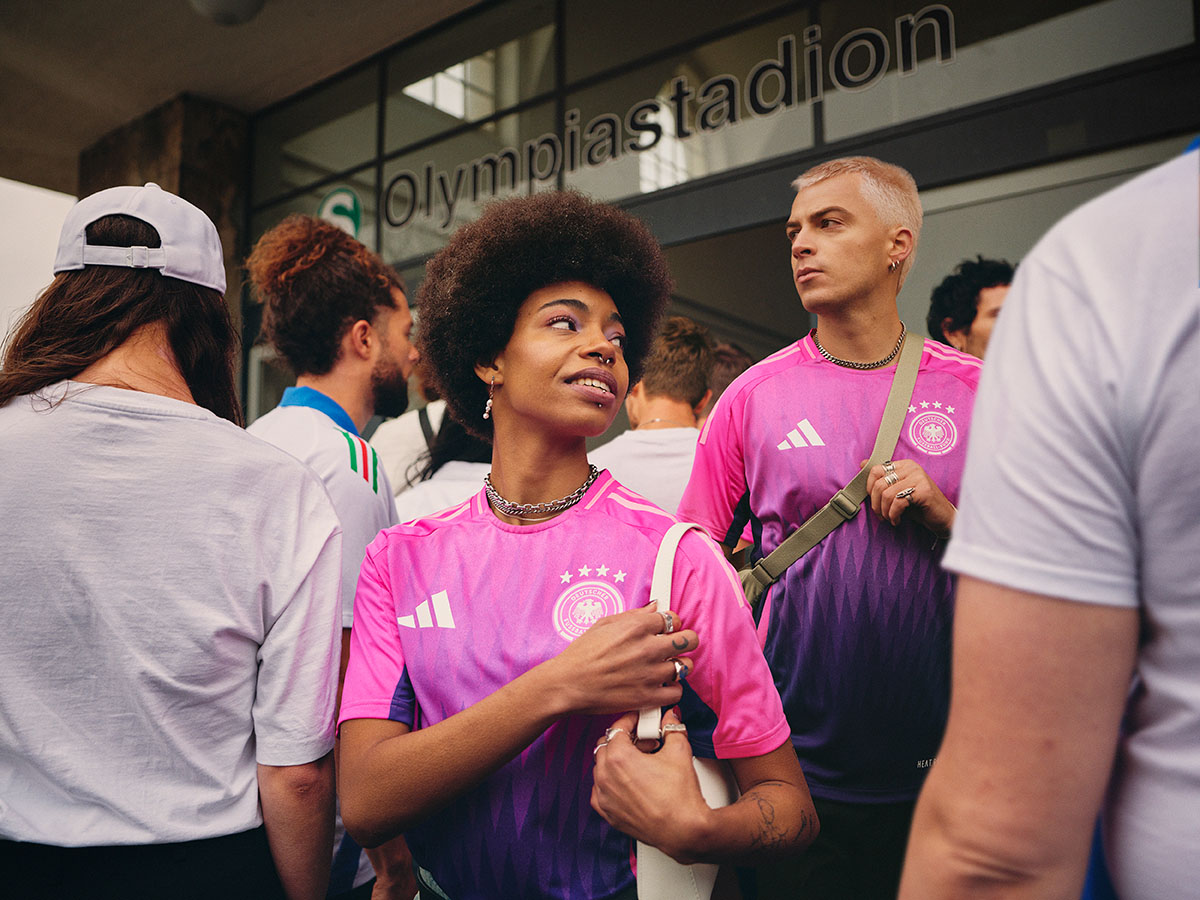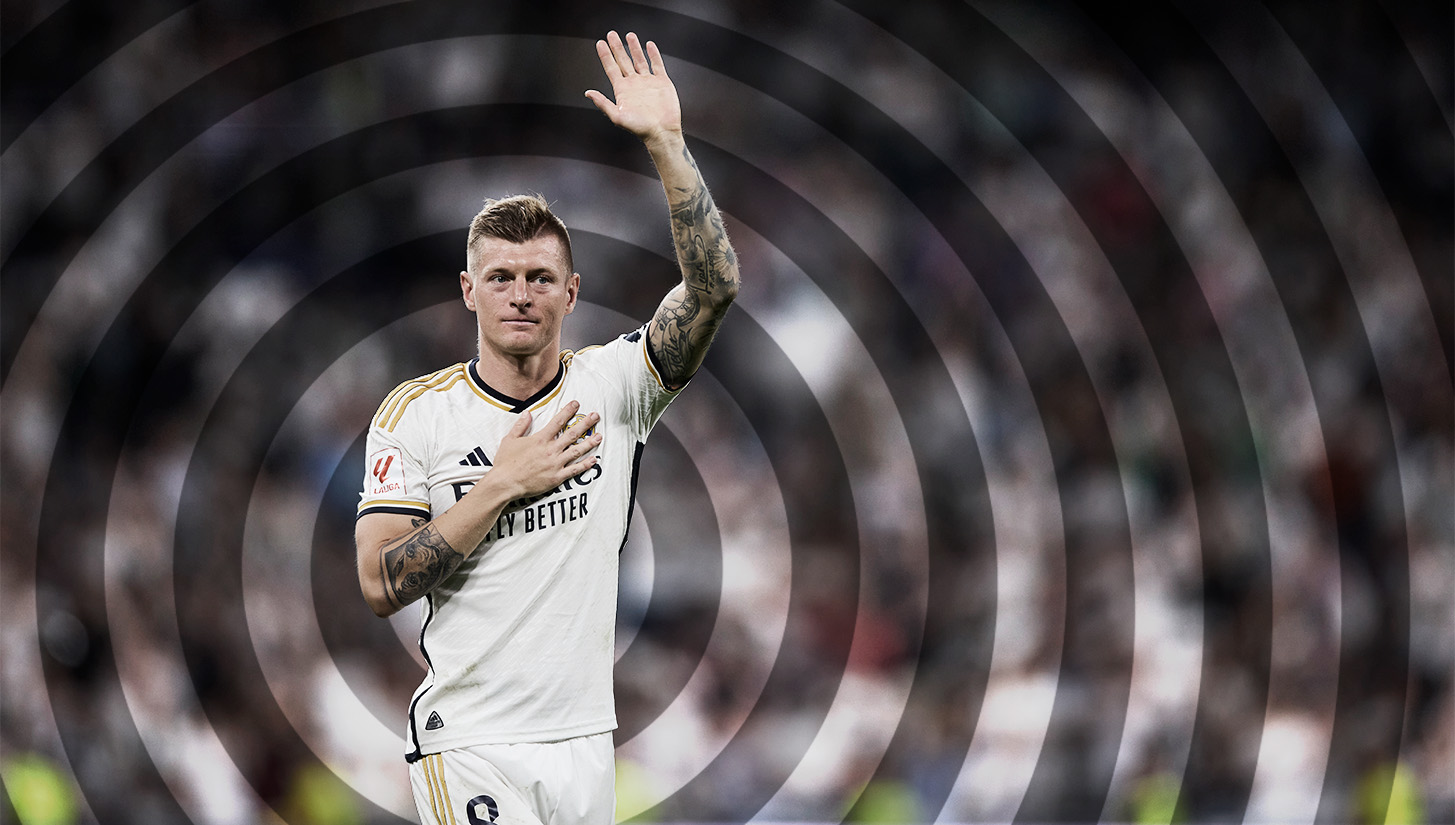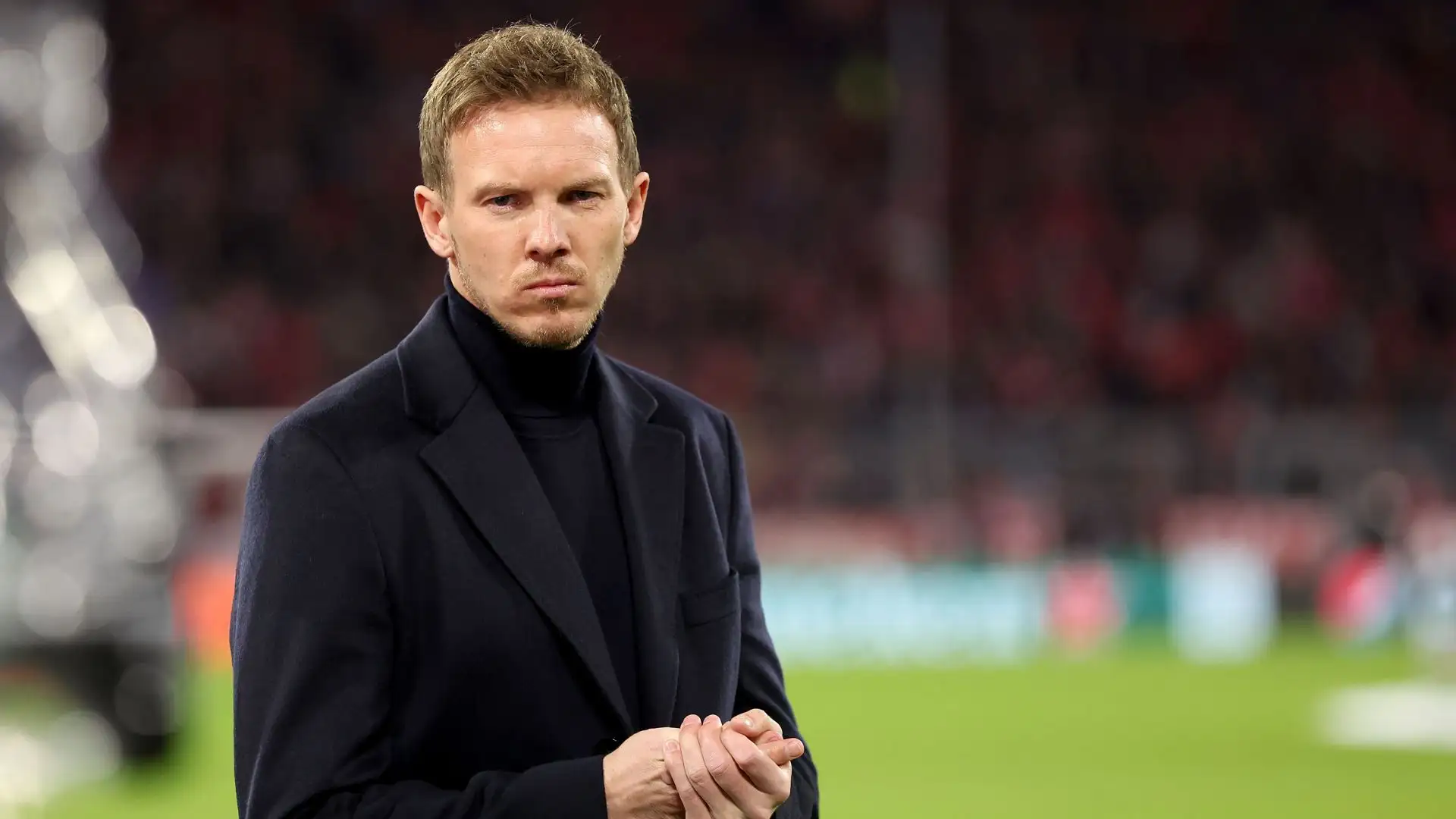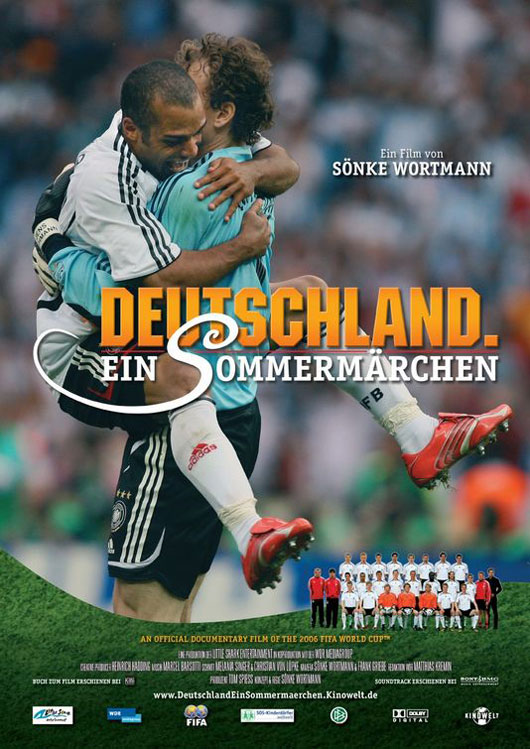One year ago, no one would have named the German national team among their favorites for the EURO 2024. The team looked lost, and a stretch of disappointing results had fan morale low. But shortly before the start of the home tournament on June 14, the prospects for success have shifted completely with newfound hope for Ein Sommermärchen (A Summer Fairytale) 2.0.
It’s March 26, 2024, 11 minutes into an international friendly between Germany and the Netherlands. The DFB is on the attack with the ball ending up at the feet of VfB Stuttgart player Maximilian Mittelstädt, whose attempt with his left foot lands at the back of net to score a stunner as his first international goal.
In the following moments, the stadium loudspeakers at Deutsche Bank Park in Frankfurt play the ’80s hit “Major Tom” by Peter Schilling: “Und dann hebt er ab und völlig losgelöst von der Erde.” (“And then he takes off and is completely released from the earth.”) Completely released — there was no better word to describe the feeling across Germany at this very moment.
A wave of joy and ecstasy, but also surprise and, above all, great relief swept through the whole country at that very moment. Germany would go on to win 2-1, capping off a successful international break that also included a 2-0 victory over reigning World Cup runners-up France. Hope had returned to a country that had forgotten what it felt like to get behind its national team.
After a long dry spell plagued by disappointments and coaching changes, Germany had finally found its way back to success and, above all, had the fans on their side again. But this was just the beginning of the anticipation for the European Championship’s host nation.
A Polarizing Jersey and Novel Player Announcement Rollout

The marketing campaign to create excitement among fans had already started earlier with the introduction of the new Germany jerseys, especially the away kit. Never before has a design for a national team jersey divided the public so strongly. The shirt features a pink-to-purple gradient base color with a sunburst graphic pattern. The striking design initially caused astonishment among a number of fans. Voices were quickly raised that the shirt in “women’s colors” was just one of the latest trends in the direction of a “gender policy” that the German federation wanted to promote.
However, the DFB marketing department seemed to have already anticipated this reaction. A campaign following the release positioned the jersey as a fashion statement, embracing the bright and unorthodox color scheme as a way to bring new fans to the game.
The idea was a complete success, as the jersey quickly became a best-seller. It put up the best sales start in history for a German away jersey, and quickly sold out.
🇩🇪 Official: Jonathan Tah will go to the Euros
The DFB has decided to add a bit of creativity – after having announced Nico Schlotterbeck on national TV news @tagesschau yesterday, the DFB will proceed to announce a new name every day via different ways (social media,… pic.twitter.com/vnmVb4OD89
— Bayern & Germany (@iMiaSanMia) May 13, 2024
The subsequent announcement videos for the player nominations proved to be similarly creative. Take for example Borussia Dortmund’s Nico Schlotterbeck who was anounced during the 8 p.m. news program, or a video of Leverkusen star Florian Wirtz appearing at a popular German artist’s concert. The bit-by-bit announcement via a wide variety of distribution channels, which reached a particularly large target group in this way, created an arc of suspense and achieved a huge reach.
It just goes to show: with the right tactics it’s worth having the courage to take the next step. This campaign was just another small building block to bring the upcoming EURO closer into focus for the general public, and it was certainly worth it.
A Midfield Maestro’s Last Hurrah

German fans have become desperate for success stories, because the past years have not been easy for the men’s senior team. The side hasn’t made it past the World Cup group stage since winning it all in 2014, and the Germans were eliminated in the round of 16 at EURO 2020.
In addition, there were several strikes in the last Bundesliga season against new investor plans by the German Football League.
The tide only turned towards the end of the season. Bayer Leverkusen ended Bayern Munich’s league title winning streak and advanced to the Europa League final. Two German teams, Bayern and Dortmund, also reached the semifinals of the Champions League, with BVB progressing to the final.

In addition, there were changes in the national team that heralded a turning point. Julian Nagelsmann was named the new head coach in October 2023 after the departure of Hansi Flick, who wasn’t quite the right fit. The decision initially divided the German public, however, the 36-year-old managed to restore confidence in the team and gradually unlock the potential of his players.
The combeback of Toni Kroos was a particularly important building block for the team’s cohesion. The Real Madrid midfield strategist, who had previously declared his career with the DFB over, decided to return in early 2024, and announced that the EUROs would be his final tournament as a professional.
Kroos was a decisive factor in his first games back in the national jersey, and his championship pedigree could prove vital to Nagelsmann’s side on the road back to success.
The midfielder is already considered one of the best in Germany’s storied history, and he has a chance to go out with the sole major trophy that has eluded him in his career. He has nothing to prove to anyone, but it would be a fitting finish to a phenomenal career should he lead Germany to a EURO 2024 title.
A Summer Fairytale 2.0?

Deutschland. Ein Sommermärchen (Germany. A Summer Fairytale) is the name of a documentary film that chronicles the journey of the DFB team at the 2006 World Cup in Germany, from the pre-tournament training camp to the match for third place against Portugal and the subsequent celebrations with thousands of fans.
The term Ein Sommermärchen has since become synonymous with the alignment of the team and fans hoping for another title at an international competition, while creating a unique atmosphere in the country.
The success in 2006 was not based on the play on the pitch alone, but also through the passion and commitment of the fans, whose heightened emotions and raucous celebrations added to the overall aura of the tournament.
With another major soccer tournament being held in Germany, it was almost inevitable that memories of summer 2006 would resurface. During that period, the country presented itself to the world as a welcoming place for all, having often previously been viewed negatively in world politics. The 2006 World Cup not only helped to boost Germany’s economy, but also gave the country a bright new face for visitors and a sense of identity for residents.
For the first time, FIFA would introduce its Fan Fest, a free public event where fans could gather all over the country to watch games together as part of the crowd. Known to Germans as Fanmeilen, the largest fan gathering took place in Berlin in front of the famous Brandenburg Gate and is still considered the largest Fanmeilen in Germany today. It is estimated that up to 900,000 people watched the matches broadcast live on large screens.
Watch parties were born and have since established themselves as part of German soccer culture. Similar events have been repeated at subsequent major sporting events, but to date there has been no comparable repetition in terms of spectator numbers and enthusiasm. For the EUROs this year, multiple public viewing spots have been pre-planned, including the Brandenburg Gate in Berlin and the Olympic Park in Munich, among others.
Both the growing momentum of the team as well as the nostalgia of 2006 have German fans hopeful that their team can progress far in the tournament. If things all go to plan, 2024 will be just as influential and inspirational as the World Cup 18 years ago.
Germany will make its first tournament appearance in the opening match on June 14 in Munich’s Allianz Arena. It could be the start of a new story — maybe even a fairytale.








